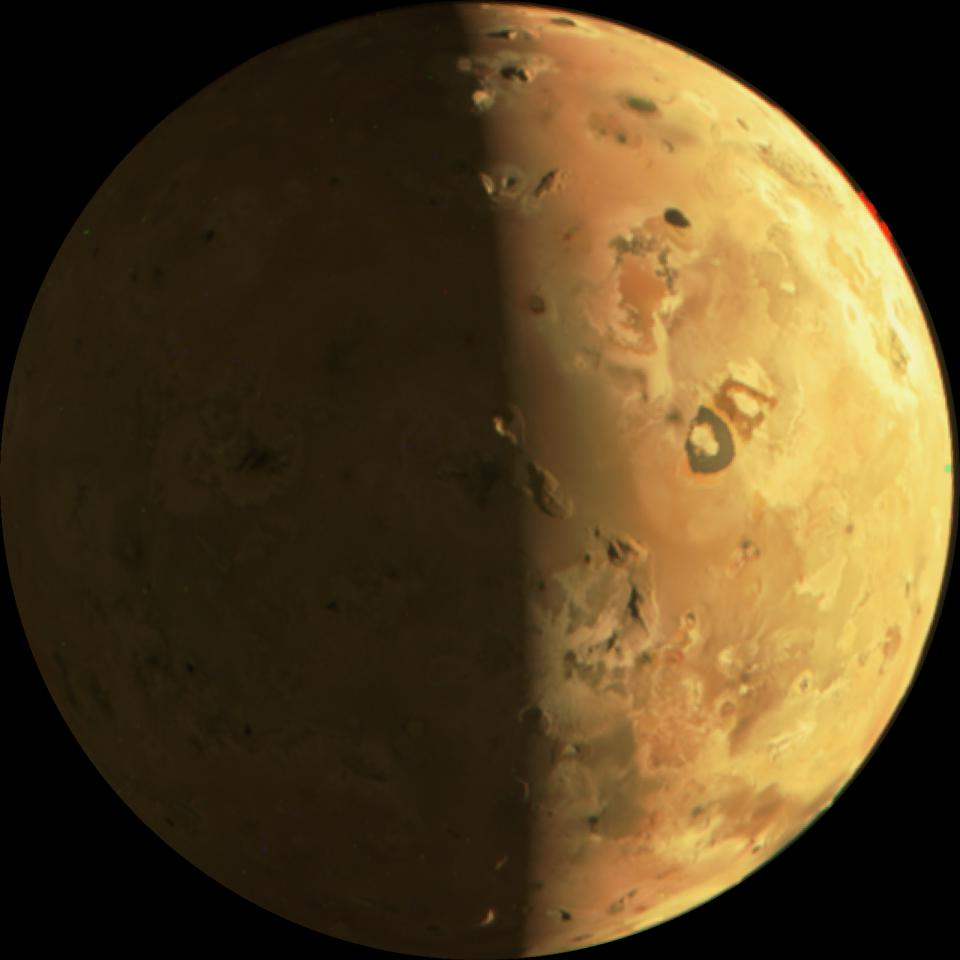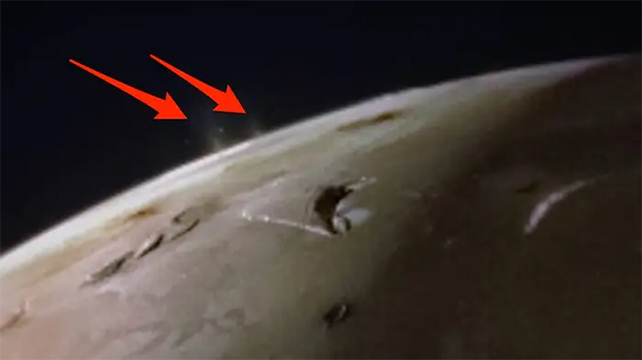NASA Releases Breathtaking Images Of Volcanic Eruptions On Jupiter's Moon Io
NASA releases breathtaking images of volcanic eruptions on Jupiter's moon Io. On Saturday, NASA's Juno spacecraft captured these intricate images of the Solar System's most volcanically active world.
Author:Camilo WoodReviewer:Dexter CookeFeb 08, 2024272 Shares27.1K Views

NASA releases breathtaking images of volcanic eruptions on Jupiter's moon Io. On Saturday, NASA's Juno spacecraft captured these intricate images of the Solar System's most volcanically active world. During its close fly-by, the spacecraft observed plumes of volcanic activity erupting from Io's surface in real-time.
This fly-by marks the second in a series of two close encounters to gain a fresh understanding of the intense phenomena beneath Io's surface. These missions represent humanity's nearest approaches to Io in over two decades, with Juno surveying the moon from a distance of 930 miles. Below are the remarkable initial images captured during this historic event.
A Tortured Moon
Io, often described as a "tortured moon," undergoes constant gravitational turmoil due to the competing forces acting upon it. According to Scott Bolton, the principal investigator of NASA's Juno mission, Jupiter's enormous mass exerts a strong pull on the planet, and its nearby moons Europa and Ganymede also contribute to the gravitational push and pull.
This gravitational tug-of-war subjects Io to immense friction across its surface, resulting in significant heating and driving its volcanic activity. With approximately 400 active volcanoes dotting its landscape, Io's volcanic eruptions are a spectacle. Juno's close-up image from February 3rd shows plumes of gas erupting, demonstrating the moon's dynamic nature.
Io's volcanoes are much larger than anything that can be found on Earth, although they are just slightly larger than Earth's moon. These blazing giants can release torrents of scalding lava that are capable of traveling dozens of miles into the atmosphere. One example of this is Loki Patera, which is the largest volcano on Io. Its size is approximately twice as huge as Mauna Loa, which is the greatest active volcano on Earth.
The Juno spacecraft has been making a careful orbit around Jupiter every 38 days since the year 2016. The Juno spacecraft is currently in the extended mission phase, during which it will begin an exhaustive examination of the entire Jovian system, which will include Jupiter, its rings, and its moons, and will continue until September 2025.
With the help of these fly-bys, the scientists working on the Juno project hope to gain a deeper and more comprehensive understanding of the forces that are responsible for the explosive volcanic activity on Io. At this time, two opposing ideas are attempting to explain the phenomenon.
Io's intense volcanism is thought to originate from a worldwide lava ocean that is constantly seething beneath its surface, according to one explanation. On the other hand, another hypothesis proposes that it originates from the moon's solid core, which is formed of hot metal. It is possible that the solution to this intriguing mystery will gradually become apparent over the course of the coming months as experts continue to investigate the data.
Jump to

Camilo Wood
Author
Camilo Wood has over two decades of experience as a writer and journalist, specializing in finance and economics. With a degree in Economics and a background in financial research and analysis, Camilo brings a wealth of knowledge and expertise to his writing.
Throughout his career, Camilo has contributed to numerous publications, covering a wide range of topics such as global economic trends, investment strategies, and market analysis. His articles are recognized for their insightful analysis and clear explanations, making complex financial concepts accessible to readers.
Camilo's experience includes working in roles related to financial reporting, analysis, and commentary, allowing him to provide readers with accurate and trustworthy information. His dedication to journalistic integrity and commitment to delivering high-quality content make him a trusted voice in the fields of finance and journalism.

Dexter Cooke
Reviewer
Dexter Cooke is an economist, marketing strategist, and orthopedic surgeon with over 20 years of experience crafting compelling narratives that resonate worldwide.
He holds a Journalism degree from Columbia University, an Economics background from Yale University, and a medical degree with a postdoctoral fellowship in orthopedic medicine from the Medical University of South Carolina.
Dexter’s insights into media, economics, and marketing shine through his prolific contributions to respected publications and advisory roles for influential organizations.
As an orthopedic surgeon specializing in minimally invasive knee replacement surgery and laparoscopic procedures, Dexter prioritizes patient care above all.
Outside his professional pursuits, Dexter enjoys collecting vintage watches, studying ancient civilizations, learning about astronomy, and participating in charity runs.
Latest Articles
Popular Articles
